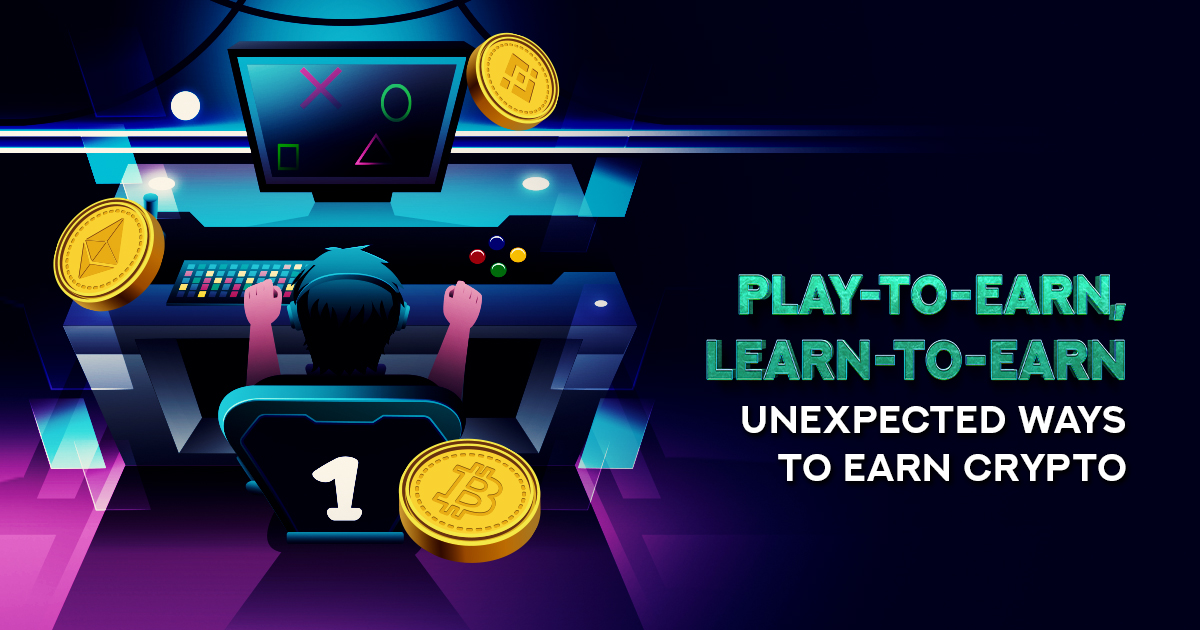There are different avenues that the introduction of the blockchain unveiled over the last few years opening up opportunities for people to make money. While the mining of crypto could be considered a timeless classic, people need to have some extraordinary computing power and spend inordinate amounts of electricity in solving the ever-increasingly complex cryptographic equations to add a block.
The introduction of decentralized ledger technology and the possibilities of flawless automation have opened opportunities for people to earn rewards, not just with crypto mining but with other opportunities as well.
One of the most prominent opportunities that have opened up in the recent past is the possibility of playing games and earning real money. Popularly abbreviated P2E, this new dimension of gaming has taken both the world of gaming and the world of blockchain by storm.
P2E came in as a point of bliss for those who were trying to get into the blockchain bandwagon but did not know how to casually do so.
How Does P2E Work?
P2E, as the name implies, amply rewards the time and effort that you spend on playing the game, in addition to the skill. The skill factor is one of the most important components of the P2E ecosystem.
The skill component ensures that the most talented players are rewarded lavishly. This has led some people to even explore P2E gaming as a means of livelihood. There are a lot of P2E games that have enhanced the livelihood of people in places like Vietnam, the Philippines, Thailand, and Indonesia.
All that said, some people will bring in an argument telling that gaming is nothing more than a waste of time irrespective of anyone being able to earn money out from it. While there may be people who agree or disagree with the statement, it cannot be denied that there is a massive magnitude of skill involved in playing a game, much like how any other practical sport would demand.
Does This Mean That Earning For Some Activities Would Be Confined Only To Gaming?! Definitely Not!
Recently, an even new dimension of activity-based learning through the blockchain has been enabled, and it is called Learn-to-earn. Learn-to-earn is like P2E where the ‘play’ is replaced by learning.
We have heard that learning is a rewarding experience, and it has become literally true in the case of Learn-to-earn. Learn-to-earn enables people to earn rewards not only for learning but also for completing tests and gaining certifications.
This is a brilliant way to initiate people into crypto/blockchain, incentivizing their efforts to learn about the fine elements of the ecosystem. Learn-to-earn might not be as established as P2E is… for obvious reasons. Yes! Let us all admit it. Learning something is not as entertaining as playing something is.
Learn-to-earn, however, is an attempt to not only make the entire learning system more game-like but also to bring blockchain and rewards into the world of educating people.
Ask any school and they will tell you how important the playing aspect of learning is, and the same school will tell you how important it is to learn through a playful method. P2E and Learn-to-earn have effectively used decentralized and distributed ledger technology to make playing more lucrative and learning more fun and lucrative. The possibilities that get unfolded with this introduction of the two faces of a tall totem pole in the world of blockchain are literally infinite.
As you may have known, the blockchain is borderless, and it can bring down the barriers of geographic and political confinement, reaching its advantages to almost every corner of the planet that has valid connectivity. By opening up aspects of the economy that will incentivize and reward people with real money for their efforts in playing and learning, P2E and Learn-to-earn are bound to lead the world of the future!
